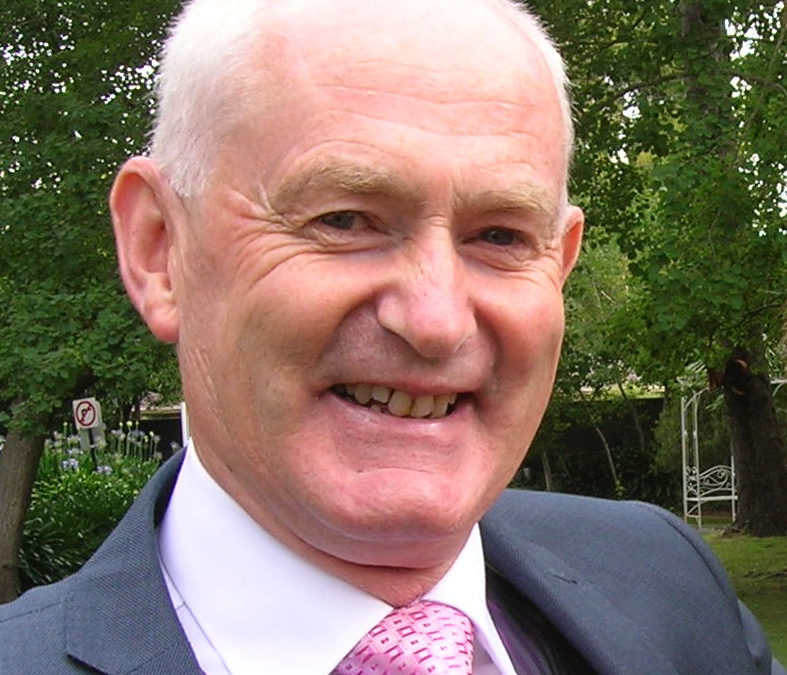
Have You Ever Read the Real “Quiet Man”! By David Kissane, Lacca and Ardfert
This year marks the fiftieth anniversary of the death of Ballydonoghue’s most famous son, Maurice Walsh (1879-1964). Despite the fact that Maurice was the author of fourteen novels along with collections of stories and other works, he is best remembered as the author of “The Quiet Man”, which was the foundation for the iconic 1952 John Ford film with John Wayne and Maureen O’Hara.
But “The Quiet Man” began life as a mere short story in The Saturday Evening Post in the USA on February 11th, 1933 with Shawn Kelvin as the main character. (That was when John Ford first saw it.) Two years later, the story appeared in a collection of stories called “The Green Rushes” and Walsh by then had changed the main character’s name to Paddy Bawn Enright, a real man who worked on the Walsh farm in Ballydonoghue. When the film was released, the name was changed again to Seán Thornton, played by John Wayne.
But Ballydonoghue can feel a little hard done by in the saga of the history of the film. Tourists throng to Cong in Mayo where the film was made, but very few come to Ballydonoghue where Maurice Walsh’s house still stands with a plaque to commemorate the prolific author. Cong initiated a “Quiet Man Festival” some years ago, but our parish has never had such a festival. The local inspiration for the film seems to have been an event at Listowel fair, where a bully refused to pay his sister’s fortune, and where a fight took place between a local farmer, Quiet Jack McElligott and a jobber who tried to cheat him. These events are hardly ever connected with the “Quiet Man”. And what about Paddy Bawn Enright, the real Quiet Man? Shouldn’t tourists be directed to his home townland, to the “small farm on the first warm shoulder of Knockanore Hill” as Walsh described it in the original story! Add to this the fact that the bulk of Walsh’s work is now out of print and that characters like Thomasheen James O’Doran (based on World War 1 veteran Tom O’Gorman from Asdee who worked for the Walsh family) are likely to vanish from the community memory, it looks like a massive Ballydonoghue contribution to literature and to cinematography could vanish forever!
It has to be said that The Maurice Walsh Memorial Committee did excellent work over the years to highlight the career of Maurice Walsh and was responsible in conjunction with Listowel Writers’ Week for the erection of a monument at Lisselton Cross, but references to this monument are scanty on any website devoted to our Maurice.
The Original Story
To help bring the original story back home to where it belonged, the following are the opening paragraphs of “The Quiet Man” as it first appeared in The Saturday Evening Post in the USA in 1933:
‘Shawn Kelvin, a blight young man of twenty, went to the States to seek his fortune. And fifteen years later he returned to his native Kerry, his blithness sobered and his youth dried to the core. And whether he had made his fortune or whether he had not nobody could be knowing for certain. For he was a quiet man, not given to talking about himself and the things he had done. A quiet man, under middle size, with strong shoulders and deep-set blue eyes, below brows darker than his dark hair – that was Shawn Kelvin. One shoulder had a habit of hunching slightly higher than the other, and some folks said it came from a habit he had of shielding his eyes in the glare of an open-hearth furnace in a place called Pittsburgh, while others said it used to be a way he had of guarding his chin that time he was a sort of sparring-partner punching bag at a boxing camp.
Shawn Kelvin came home and found he was the last of the Kelvins and that the farm of his forefathers had added its few acres to the ranch of Big Liam O’Grady of
Moyvalla. Shawn took no action to recover his land, though O’Grady had got it meanly. He had had enough of fighting, and all he wanted now was peace. He quietly went among the old and kindly friends and quietly looked about him for the place and peace he wanted, and when the time came quietly produced the money for a neat, handy small farm on the first warm shoulder of Knockanore Hill below the rolling curves of heather. It was not a big place, but it was in good heart and it got all the sun that was going. And best of all, it suited Shawn to the top notch of contentment, for it held the peace that tuned to his quietness, and it commanded the widest view in all Ireland, vale and mountain and the lifting green plain of the Atlantic Sea…’
(The Magazine asks that readers submit their favourite Maurice Walsh story for the 31st edition to help keep the work of our famous writer alive.)
